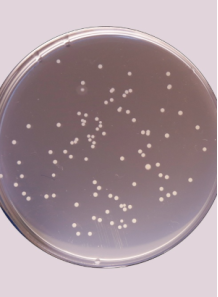Salmonella Counting Service
- Product Code: 127388
Salmonella Enumeration
description Service Overview
Salmonella Counting Procedure
1. Sample Collection and Preparation
-
Aseptic Sampling:
Collect the sample (e.g., food, water, or environmental swab) using aseptic techniques to avoid cross-contamination. -
Sample Size:
- Solid Samples: Weigh 25 g of the sample.
- Liquid Samples: Use an appropriate volume (e.g., 25–100 mL).
-
Homogenization:
Add the sample to a sterile container with 9 times its weight/volume of Buffered Peptone Water (BPW) (resulting in a 1:10 dilution). Homogenize thoroughly using a stomacher or blender.
2. Pre-enrichment
-
Purpose:
To revive stressed or injured Salmonella cells that may be present at low levels. -
Procedure:
Incubate the homogenized sample in BPW at 35 ± 1°C for 18–24 hours. This step increases the number of viable Salmonella cells before selective enrichment.
3. Selective Enrichment
-
Rationale:
The pre-enriched sample is transferred into one or more selective enrichment broths that favor the growth of Salmonella while inhibiting competing flora. -
Common Enrichment Broths:
- Rappaport-Vassiliadis (RV) Broth: Typically incubated at 42 ± 0.5°C for 24 hours.
- Selenite Cystine (SC) Broth: Incubated at 35 ± 1°C for 24 hours.
(Some protocols may use both broths in parallel to improve detection sensitivity.)
4. Plating on Selective Agar Media
-
Purpose:
To isolate and enumerate Salmonella colonies from the enrichment broth. -
Selective/Differential Media Options:
- Xylose Lysine Deoxycholate (XLD) Agar: Salmonella colonies often appear red with black centers.
- Hektoen Enteric (HE) Agar: Salmonella typically produces blue-green colonies with or without black centers.
- Bismuth Sulfite (BS) Agar or Salmonella-Shigella (SS) Agar: Also frequently used.
-
Plating Technique:
- Direct Plating: Streak or spread an aliquot of the enrichment broth onto the selective agar.
- Serial Dilutions (for Enumeration): If quantitative counts are required and the bacterial load is expected to be high, prepare serial dilutions of the enriched sample and plate appropriate dilutions to obtain countable plates (ideally 25–250 colonies per plate).
-
Incubation:
Incubate the plates at 35 ± 1°C for 24–48 hours, or as specified by the agar manufacturer or standard method.
5. Colony Counting and Preliminary Identification
-
Counting Colonies:
After incubation, count the number of colonies that exhibit characteristics typical of Salmonella on the selective media.- Note: Only count plates that fall within the statistically acceptable range (often 25–250 colonies) for reliable enumeration.
-
Morphological Observation:
Look for colonies with typical Salmonella features (e.g., on XLD agar, red colonies with black centers).
6. Confirmation of Salmonella
Since other bacteria may sometimes produce similar colony morphologies, confirm suspected Salmonella colonies using one or more of the following:
-
Biochemical Tests:
- Triple Sugar Iron (TSI) Agar: Look for an alkaline slant with acid butt and the production of hydrogen sulfide (blackening).
- Urease Test: Salmonella is generally urease-negative.
- Motility Test: Most Salmonella strains are motile.
timeline Service Steps
| Step | Procedure | Expected Result |
|---|---|---|
| info Service steps will be provided upon request | ||
Cart
No products



